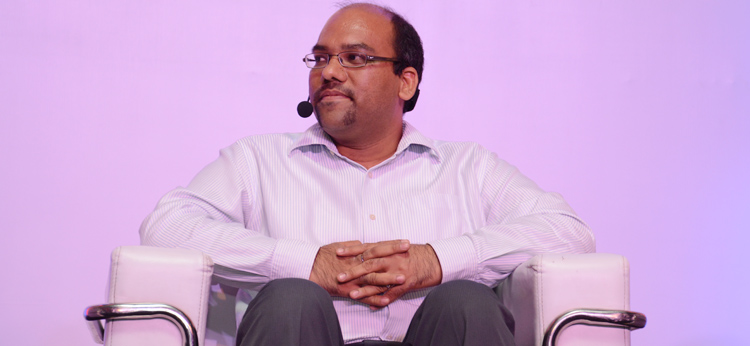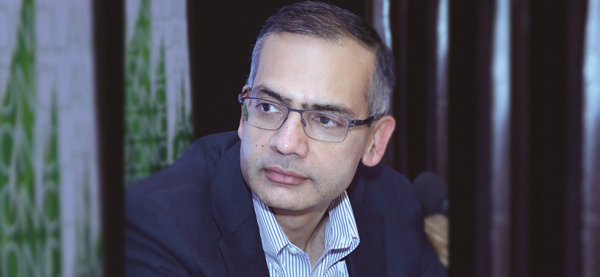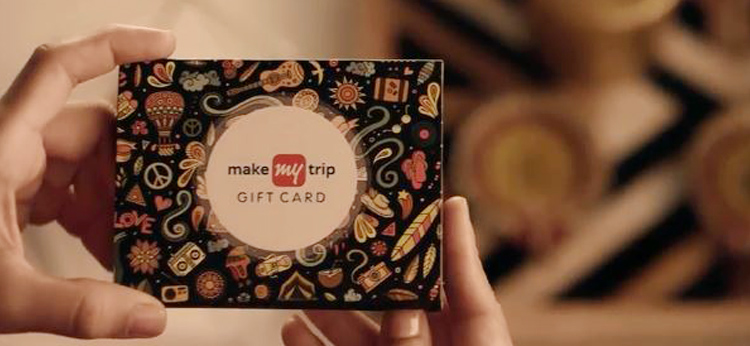India’s first home-grown travel meta-search Ixigo had started its journey way back in 2007 when the major OTAs in the country were getting into a dominant position in online booking. According to Aloke Bajpai, CEO & Co-Founder of Ixigo, the market was not too receptive to a meta-search platform then and convincing the prominent stakeholders was quite an exercise. But with MakeMyTrip and Micromax funding support in the later years, Ixigo is now on a sound wicket and is set to move into the profitability zone this year. Excerpts of an exclusive conversation on the sidelines of the recently held Phocuswright conference.
 Your major calling card is that you are India’s first meta-search engine in the travel space. Before I come to specific questions, please briefly take me through to your journey so far.
Your major calling card is that you are India’s first meta-search engine in the travel space. Before I come to specific questions, please briefly take me through to your journey so far.
The background of me and the other co-founder is that we both worked for Amadeus for four-five years after graduating from IIT. We had also travelled extensively during our formative professional years in Europe and other parts of the world and we realised that some of the new sites like Skyscanner and Kayak are more useful because they helped to find best deals and you don’t need to do the search over and over again. As a consumer, we were completely sold on to the concept of meta as a better model for travel products booking. Even on the supply side after working for a GDS, we realised that GDS technology will probably get disrupted someday because it relies on these high-capex items and charging a rent for every transaction. So our thesis was if you could build something which both supplier and user will find more useful, it will work. And that is why we started building India’s first travel meta-search engine called Ixigo in 2007. We had put in our own money and then in 2008 we had raised a small seed round from a Singapore based investor. And then a downturn came but we survived through that. The good thing about meta-search is that once the consumers come to know about it and realise the kind of money and time it saves, he is very likely to tell others about it. So most of our growth started coming organically. In our early days around 2007, when the internet subscribers base was not more than 30 million, within six months of our launch we had started receiving a traffic of 1,00,000 users. Post the seed round, we started getting more stakeholders on board – independent hotels, buses, hotel aggregators including the OTAs, etc. For buses, we had tied up with RedBus. For railways, we realised that the opportunity was not on the booking side but on the information side like PNR prediction. We started aggregating those sorts of data. We had launched our railways app in 2013 and we have seven million downloads now. Our thesis in every vertical is to look at the market equation from consumers’ standpoint and offer solutions to do away with his pain points in terms of information discovery as well as planning and booking without becoming merchant of records ourselves.
I have a specific question here. Firstly, when you had started in 2007, what was the buzz around meta-search engines globally which was in an evolving stage. And secondly, given the market conditions then, I am assuming that you must have toyed with the idea of becoming an OTA first.
We were very clear from day one on the meta model. May be we were ahead of our times. We were very certain that OTA model will get disrupted for certain kinds of consumers as well as suppliers who will not like to incentivise those channels more than their own direct channels. We were fairly convinced that there is room for meta though the market was not ready then. Consumers always confused it with OTA model because they were the ones spending a lot of money in buzz creation on television, print, etc. And on the suppliers side, it was a bigger challenge because they did not know how to work with meta. You need to have a system in place to understand how tracking of my customer will happen on your website and how will you attribute those bookings to me and then accordingly compensate. Just to cite an example, some of the airlines whom we approached in our early days advised us to rather function as an OTA platform. In their reckoning, that model was simpler. But we persisted and engaged the CEOs and VPs of these airlines and explained the logic that if you are going to create an OTA dominated market, it is not in your interest if you want your own direct channel to also become big and prominent. Our argument was: you can rely on OTAs but to a certain extent. You have to push your own direct channel and meta is the route to accomplish that. Meta is a very efficient way to acquire customers. When travellers come to search, we already know their intent. So when we funnel a customer to you, the chances of conversion is very high. Creating this kind of awareness took quite sometime initially. The OTAs, however, looked at our proposition as a threat and nobody was willing to participate with us. This, however, has happened in all markets during the evolution phase of meta engines. There is always some resistance from the established OTAs resulting from a threat perception or even ignorance. Meta-search engines always take more time to find a firm toehold in the market Skyscanner took 15 years to reach where they are today. For Kayak, it took 7-8 years before they were acquired.
And what is the situation now in terms of your association with OTAs here?
Now most of the stakeholders have accepted the fact that meta is the mainstream medium. In major markets in the world like the US and UK, meta has a major role to play. There was a statistic recently released by a global agency underlining that in China, 60 percent of the travellers visit a meta search before booking. In UK, it is fast approaching 50 percent and in the US, it is close to 35-40 percent.
Let me ask you this: how many prominent OTAs in India are now working with you?
Today, almost everybody is working with us. There are cases though where some of them are aligned with us with specific products and not with their entire inventory across the board.
How would you explain the present scale of your business? And secondly what is the outlook you have for your business in the next two years?
In the last one year, we have got into new verticals like cabs and packages. The ground transportation market is very big and there are too many players and here meta makes a perfect sense. We have also added a new marketplace on packaging where tour operators can tap into the same intent leads that we are getting on meta platforms and try to offer better packages. In terms of downloads, we have exceeded 10 million downloads of our apps. In terms of monthly active users, we are doing more than five and a half million today which is a phenomenal scale considering the fact that we have not spent any money in traditional advertising. If you would look at our total advertising spent in a cumulative sense since our inception, most of the OTAs spend that in a quarter. It is an astounding difference of how much we have grown on the word of mouth basis. We mostly indulge in video and content marketing. As a company, we have reached the inflection point in the last 12 months largely because of mobile. Our focus on mobile started much before the OTAs got aggressive on it. We launched our mobile app in 2013. In terms of monthly actives, there was a monthly report by WhichApp, an agency that channelizes the apps which are retained by the users. In the travel category, we got number three rank after IRCTC and MakeMyTrip. So we are far ahead of many mid-sized OTAs in terms of retention of app on the users mobile phone.
Can I get a sense of actual transaction happening on your site or your app?
Every month, we are doing close to 2,00,000 transaction across various product categories put together. And best part is the growth rate, in the last one year we have grown by 3x ratio. If we sustain this growth rate, our metrics will start looking like number two or three OTA in the country within a year or two. Today, we power 2 percent of all transactions happening in domestic flights. If we take it up to five percent, we will become comparable to leading OTAs in the country.
You said you have avoided doing big-bang buzz creation in the past. But now that you have reached an inflection point, doesn’t it become an imperative?
We will do it. We haven’t done in the past because we decided to indulge in it after we become profitable. As a company, we do not believe in burning a lot of money on publicity. Our thinking is to go down the profitability path before the end of this fiscal and then use the money for creating more awareness.
Are you looking for any fresh round of funding?
We will have probably another round materialising this year.
How many rounds have happened so far?
There have been three rounds. The seed round which had happened in 2008 and then MakeMyTrip and SAIF partners invested in 2011. Last year, Micromax had invested money and now they are pushing us proactively in all their devices as a native service for travel. Not just as an installed app but they have created a service around it which you can swipe across their phones and look for hotels, cabs, flights, etc. in one click.
So on a cumulative basis, how much of money you have generated so far?
Except for the MakeMyTrip round, where it was an obligation to announce the amount because they are enlisted on Nasdaq, in none of the other rounds we have shared the details of the fund size. As a philosophy, we don’t like to talk about those numbers.
But you are saying you will get profitable by the end of this year?
Absolutely. There is no doubt about it, may be by October.
Across different product categories, how does your inventory look like today?
If we include everything, then we have over 30,000 hotels (including 10 hotel OTAs and aggregators) and 50 airlines as well 20 OTAs partnering with us on the flight side. On the bus side, we have three booking sites as our partners. On the cab side, we have four-five major players in our loop. But we also have a marketplace where we have tonnes of taxi vendors who can do inter-city, full day hire, sight seeing hire, etc.
So you have space for an OTA and individual vendors too.
Yes. And that is the beauty and strength of a meta-engine.




































